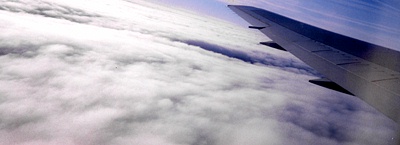All Nonfiction
- Bullying
- Books
- Academic
- Author Interviews
- Celebrity interviews
- College Articles
- College Essays
- Educator of the Year
- Heroes
- Interviews
- Memoir
- Personal Experience
- Sports
- Travel & Culture
All Opinions
- Bullying
- Current Events / Politics
- Discrimination
- Drugs / Alcohol / Smoking
- Entertainment / Celebrities
- Environment
- Love / Relationships
- Movies / Music / TV
- Pop Culture / Trends
- School / College
- Social Issues / Civics
- Spirituality / Religion
- Sports / Hobbies
All Hot Topics
- Bullying
- Community Service
- Environment
- Health
- Letters to the Editor
- Pride & Prejudice
- What Matters
- Back
Summer Guide
- Program Links
- Program Reviews
- Back
College Guide
- College Links
- College Reviews
- College Essays
- College Articles
- Back
Clouds: Beauties of the Sky
We see clouds every day. Whether it is a sunny day, or a dismal, rainy one, clouds are there. On rainy days, clouds cover the sky like a gray blanket. On sunny days, clouds dot the sky here and there, like light strokes of paint. Towering cumulonimbus, thunder clouds, lurk ominously on days of thunder and hard rain. But what are clouds?
A cloud is a mass of water drops or ice crystals suspended in the atmosphere. In other words, when water evaporates, it turns into water vapor. The water vapor rises into the atmosphere. Earth’s atmosphere is freezing! When the water vapor reaches the atmosphere, it condenses. This forms a cloud.
There are many kinds of clouds, but all of them can be categorized into three main types. They are Cumulus, Stratus, and Cirrus clouds.
Cumulus clouds are detached clouds, usually found in slightly chilly weather conditions, days where the temperature reaches about fifty to sixty degrees. They have dark bases, and can usually be spotted after heavy rain. These clouds may look fluffy and small, but when they grow in size, they become intimidating, towering cumulonimbus clouds. Cumulus clouds themselves don’t produce precipitation, but when they grow into cumulonimbus clouds, they produce extreme weather such as heavy torrential downpours, hail storms, lightning, and even tornadoes.
The next type of cloud is a Stratus Cloud. Usually, stratus clouds and fog form when it has been cold out, and then warmer, wet air blows in. The warmer air blows over the cold, and the warmer air condenses into a stratus cloud or fog. When stratus clouds form, they look like a thick sheet, or blanket, of fluffy grey cloud that has been spread over the sky. Stratus clouds are pretty thick, and the sun isn’t able to shine through them very well. They usually appear in colder areas like Minnesota, when it is or about to snow, or in warmer areas like California, when it is or about to rain. When stratus clouds form closer to the ground, they are more commonly referred to as fog!
The final type of cloud is a Cirrus cloud. Cirrus clouds are wispy, detached clouds that sometimes look like a silky lock of hair or a light stroke of paint. In the daytime, they are whiter than any other cloud in the sky. While the Sun is setting or rising, they may take on the colors of the sunset. Cirrus clouds are formed when dry air rises into the atmosphere. The little water vapor that is in the dry air transforms directly from a gas to ice crystals, and the result of that is the cirrus cloud. Cirrus clouds are made entirely of ice crystals, and this gives them their color and ability to take many different shapes.
Clouds are something that we really don’t notice often. Each type of cloud is unique in its own way, and they are all so beautiful, from the wispy cirrus clouds to the ominous cumulonimbus. Clouds are all around us, all the time. Imagine any day at all. Let’s say it’s cloudy outside. A thick sheet of clouds, stratus clouds, have come over your city. You sigh. There go your plans for playing outside with your friends. You reluctantly go back into your house and settle in your room with some hot chocolate and a good book instead. The room turns darker and you look out your window. It is raining so hard, you can hear the roar from inside your room. The clouds looked darker, and you can see some particularly large, puffy clouds in the distance. They are cumulonimbus clouds, and after seeing this, you know that there is going to be a storm outside. You sit down with your book and cozy up into your blankets. You are going to be inside for a long, long time. Even with your disappointment, you can’t help but be fascinated by the wonders that clouds can do, sometimes creating torrential storms, and sometimes just making fun shapes in the sky. You can’t believe that a mere form of condensation can create a storm like this. Clouds really are amazing.
WORKS CITED
Hitt, David/May, Sandra/ NASA. “What are Clouds?”, nasa.gov/audience/forstudents/5-8/features/nasa-knows/what-are-clouds-58.html (accessed Jan.14, 2021)
Met Office/Met Office/Met Office. “Cumulonimbus Clouds,”metoffice.gov.uk/weather/learn-about/weather/types-of-weather/clouds/low-level-clouds/cumulonimbus (accessed Jan. 14, 2021)
Karen Carr/Quatr.us/ Quatr.us. “Stratus Clouds-a blanket of cloud-Weather Science,”quatr.us/physics/stratus-clouds-blanket-cloud-weather-science.htm (accessed Jan. 14, 2021)
Met Office/ Met Office/ Met Office. “Cirrus Clouds,” metoffice.gov.uk/weather/learn-about/weather/types-of-weather/clouds/high-clouds/cirrus (accessed Jan. 14, 2021)

Similar Articles
JOIN THE DISCUSSION
This article has 0 comments.

This is an article I wrote in eighth grade. I thought it was going to be boring, but I ended up really enjoying the research process! I have all my works cited at the bottom of the page.